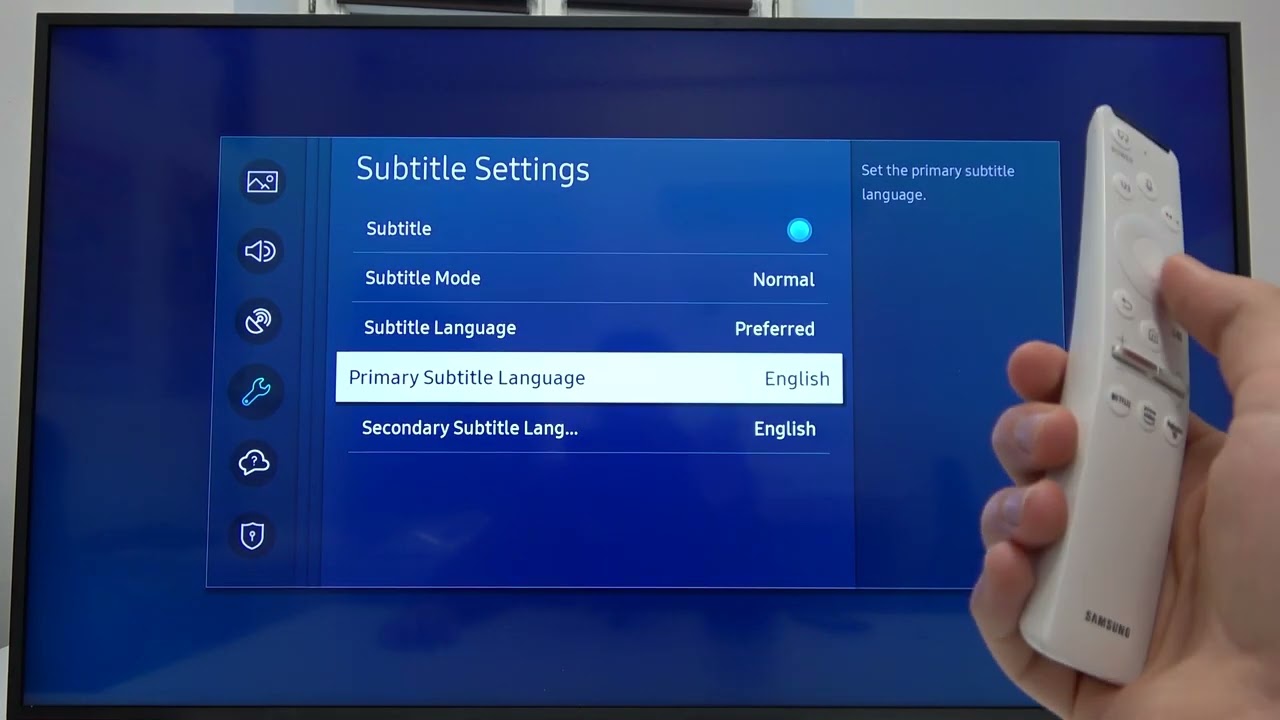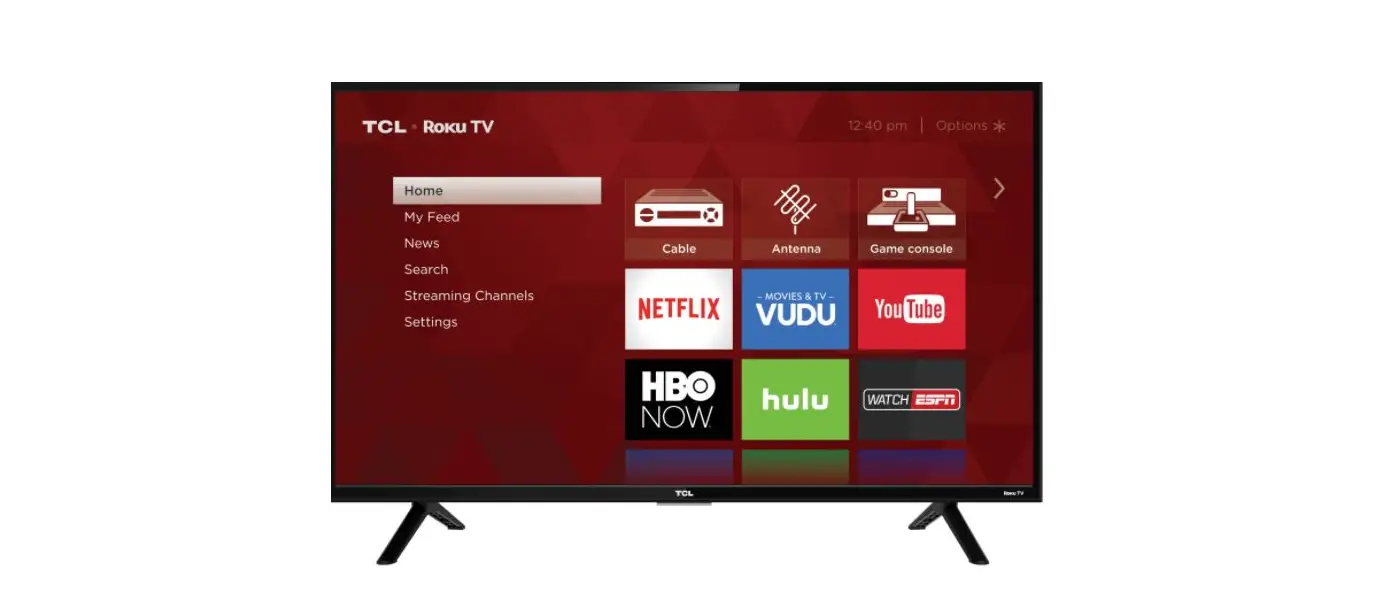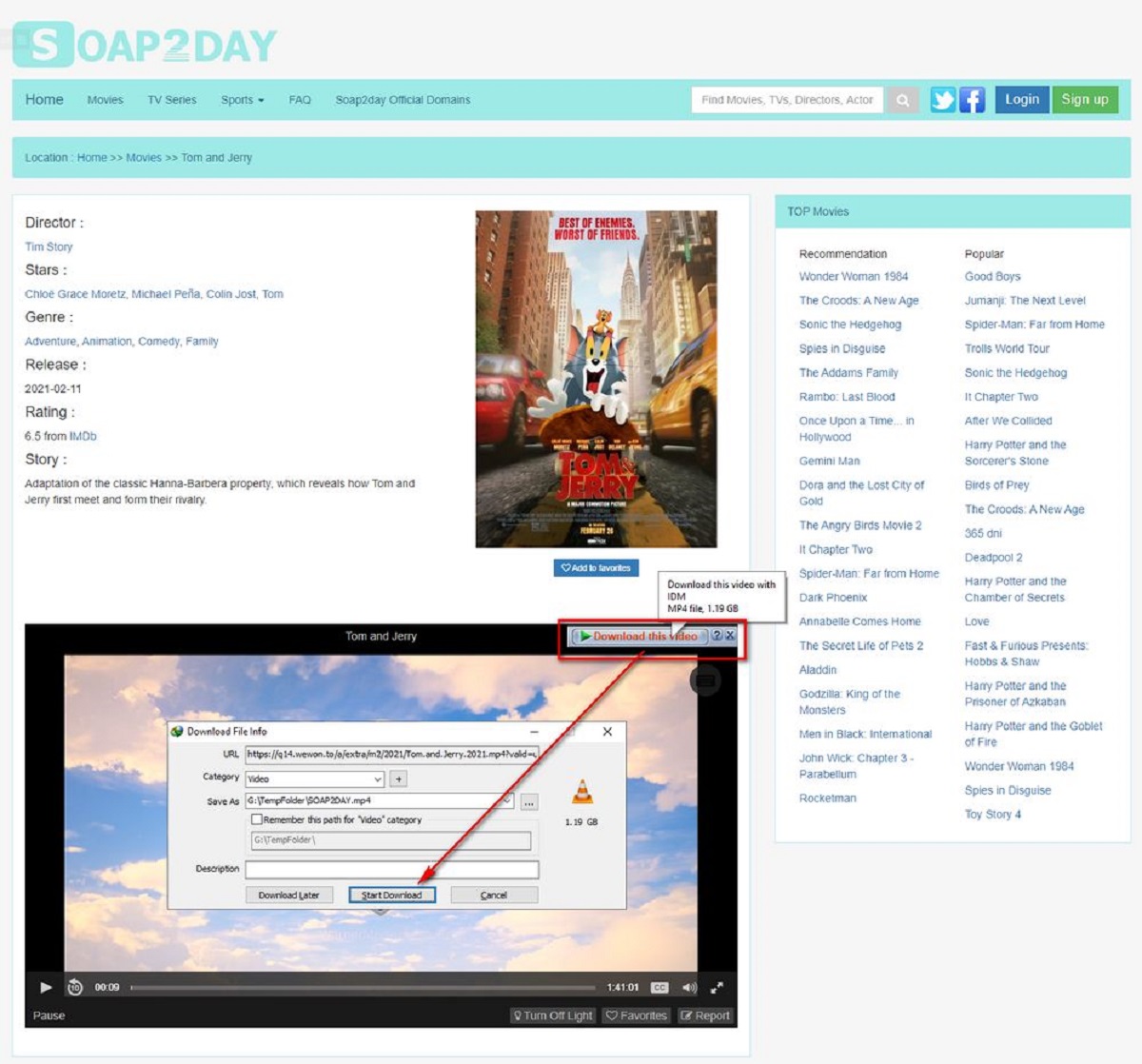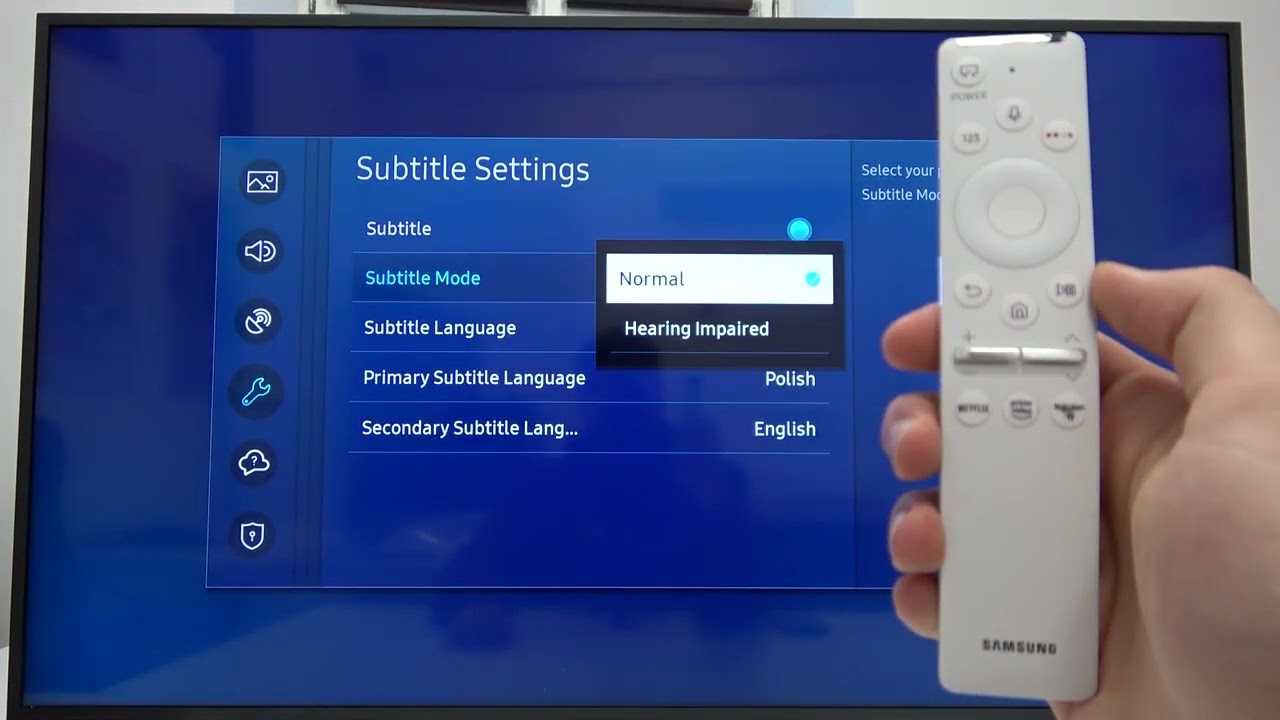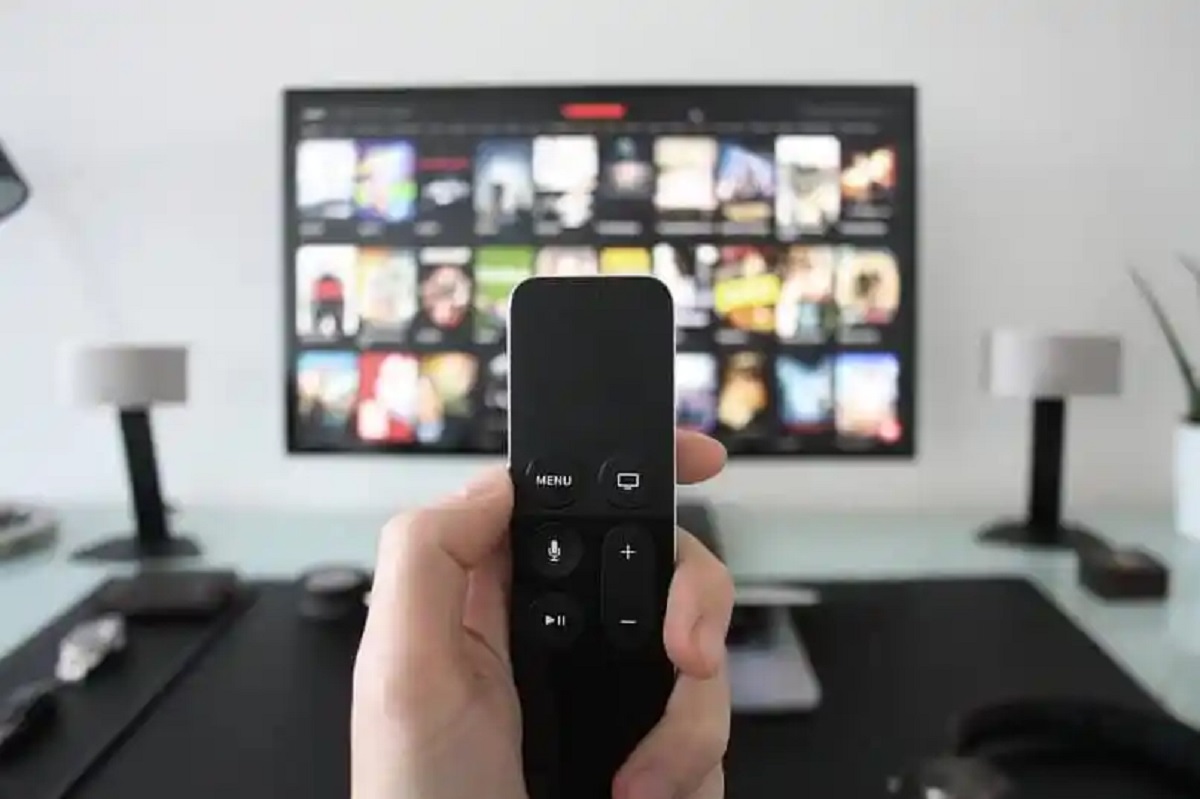Introduction
Subtitles have become an essential feature for TV viewers around the world. Whether you are watching a movie, a TV series, or even a documentary, subtitles can greatly enhance your viewing experience. They provide a text-based representation of the audio dialogue, making it easier to understand the content, especially for individuals with hearing impairments or those watching in noisy environments.
The use of subtitles has also expanded beyond just accessibility. Many people now rely on subtitles to help them fully comprehend foreign language films or decipher regional accents and dialects. Subtitles can also be beneficial for language learners who want to improve their listening and reading skills.
In this article, we will explore various options for adding subtitles to your TV. Whether your TV has built-in subtitle settings, or you need to use external subtitle devices or media players with subtitle support, we’ve got you covered. We will also discuss how to enable subtitles on popular TV brands and provide tips for choosing the right subtitle format.
So, if you’ve ever wanted to enhance your TV viewing experience or improve your understanding of foreign films, keep reading to discover the methods and tools available to help you put subtitles on your TV. Let’s dive in!
Why Use Subtitles on TV?
There are several compelling reasons why using subtitles on TV can greatly enhance your viewing experience. Let’s explore some of the key benefits:
- Improved comprehension: Subtitles provide a text-based representation of the audio dialogue, making it easier to understand the content. This is especially useful for individuals with hearing impairments or those watching in noisy environments where it may be difficult to hear every word clearly.
- Enhanced language learning: Watching TV shows and movies with subtitles can be a valuable tool for language learners. By seeing the text displayed alongside the spoken dialogue, viewers can strengthen their listening and reading skills while acquiring new vocabulary and improving pronunciation.
- Accessibility: Subtitles make audiovisual content accessible to individuals who are deaf or hard of hearing, allowing them to fully enjoy the TV shows and movies they love. Subtitles can also be beneficial for viewers with learning disabilities or cognitive impairments who may have difficulty processing spoken language.
- Understanding foreign language content: Subtitles are particularly useful when watching foreign language films or TV shows. They provide translations of the dialogue, allowing viewers to follow the story and grasp the nuances of the language. This opens up a world of international cinema and expands cultural understanding.
- Clarity for accents and dialects: Subtitles can help viewers understand accents, dialects, or regional variations in speech that they may not be familiar with. They offer textual cues that aid in deciphering words or phrases that might otherwise be challenging to comprehend.
- Reduced distractions: In noisy environments or while watching TV with others, subtitles can help minimize distractions and ensure that viewers catch every important piece of dialogue. This is particularly beneficial for maintaining continuity in complex storylines or when watching dialogue-heavy content.
With these advantages in mind, it’s clear that subtitles are not just an optional feature, but an invaluable tool that can enrich your TV viewing experience. Whether you’re looking to improve comprehension, learn a new language, or simply enjoy your favorite shows without missing a beat, subtitles can make all the difference.
Options for Adding Subtitles to Your TV
Adding subtitles to your TV can be accomplished through various methods and devices. Let’s explore some of the options available:
- Built-in Subtitle Settings: Many modern TVs come with built-in subtitle settings that allow you to enable subtitles for supported formats. These settings can usually be accessed through the TV’s on-screen menu or settings. You can customize the appearance of the subtitles, such as font size, color, and positioning, to suit your preferences.
- External Subtitle Devices: If your TV doesn’t have built-in subtitle capabilities or you prefer more flexibility, you can use external subtitle devices. These devices, like subtitle decoders or converters, are connected between your TV and the source of the video content, allowing you to add subtitles. They support various subtitle formats and usually have options for customization.
- Media Players with Subtitle Support: Another option is to use media players that have built-in subtitle support. Devices such as streaming media players, Blu-ray players, or gaming consoles often include options to enable subtitles for the content being played. You can either stream content with embedded subtitles or add external subtitle files.
- Streaming Services: Many popular streaming services like Netflix, Amazon Prime Video, and Hulu provide the option to enable subtitles for their content. These services often offer various subtitle languages and customization options, allowing you to adjust the appearance and style of the subtitles as per your preference.
Each of these options provides a convenient way to add subtitles to your TV. The method you choose will depend on your TV’s capabilities, the availability of built-in features, and your personal preferences.
Remember, it’s essential to ensure compatibility between the subtitle format and the TV or device you are using. Different TVs support different subtitle formats, such as SRT, SUB, or ASS. Be sure to check the specifications of your TV or device and choose a compatible subtitle format to ensure seamless playback.
Now that we’ve explored the various options for adding subtitles to your TV, let’s dive into the specific methods for enabling subtitles on popular TV brands. Read on to discover how you can bring subtitles to your favorite content!
Method 1: Built-in Subtitle Settings
If your TV has built-in subtitle settings, enabling subtitles is usually a straightforward process. Here’s how you can do it:
- Access the TV’s on-screen menu: Use the remote control to navigate to the settings or setup menu of your TV.
- Locate the subtitle settings: Look for options related to subtitles or closed captions. These settings may be found under the “Audio” or “Language” section.
- Enable subtitles: Once you’ve found the subtitle settings, select the option to enable subtitles. Depending on your TV model, you may be able to choose between different subtitle languages or even customize the appearance of the subtitles.
- Select subtitle format: If your TV supports more than one subtitle format, ensure that you choose the format that matches the subtitles you want to display. Common subtitle formats include SRT, SUB, and ASS.
- Adjust subtitle settings (optional): Some TVs allow you to customize the appearance of the subtitles, such as font size, color, background, and positioning. Take advantage of these options to personalize your subtitle viewing experience.
- Save and enjoy: Once you’ve adjusted the subtitle settings to your preference, save the changes and start watching the content with subtitles.
It’s important to note that the exact steps and options may vary depending on your TV brand and model. If you’re unsure about the specific process for your TV, consult the user manual or visit the manufacturer’s website for detailed instructions.
Built-in subtitle settings provide a convenient way to enable and customize subtitles directly on your TV. With just a few simple adjustments, you can enhance your TV viewing experience and enjoy your favorite content with clear and easily readable subtitles.
Next, we’ll explore another method for adding subtitles to your TV using external subtitle devices. Keep reading to find out more!
Method 2: External Subtitle Devices
If your TV doesn’t have built-in subtitle settings or you prefer more flexibility, using external subtitle devices is an excellent option. Here’s how you can add subtitles to your TV using external subtitle devices:
- Choose an external subtitle device: There are various external subtitle devices available in the market, such as subtitle decoders or converters. Research and select a device that is compatible with your TV and supports the subtitle format you intend to use.
- Connect the external subtitle device: Connect the external subtitle device to your TV using the appropriate cables, such as HDMI or AV cables. Ensure that the device is securely connected and powered on.
- Locate the subtitle input port: On your TV, identify the subtitle input port where you will connect the external subtitle device. This may be labeled as “Subtitle IN” or “AV IN” on your TV’s input panel.
- Connect the device to the subtitle input port: Plug the output of the external subtitle device into the subtitle input port on your TV. Make sure the connections are correct and secure.
- Enable the subtitle input: Using your TV’s remote control, navigate to the input settings and locate the subtitle input that you connected the external device to. Enable the subtitle input to allow the TV to receive the subtitle signal from the external device.
- Adjust subtitle settings (optional): Some external subtitle devices allow you to adjust the subtitle settings, such as font size, color, and positioning. Refer to the user manual of your external device to learn more about the available customization options.
- Enjoy subtitles: Once the external subtitle device is properly connected and configured, you can start watching your favorite content with subtitles. The device will process the subtitle signal and display the subtitles on your TV screen.
Using external subtitle devices provides a flexible solution for adding subtitles to your TV. It allows you to use various subtitle formats and gives you control over the appearance and customization options of the subtitles.
Continue reading to discover another method for adding subtitles to your TV using media players with subtitle support.
Method 3: Media Players with Subtitle Support
If you’re using a media player to stream content on your TV, you can take advantage of its built-in subtitle support. Here’s how you can enable subtitles using media players:
- Connect your media player: Connect your media player device, such as a streaming media player, Blu-ray player, or gaming console, to your TV using HDMI or other supported cables. Ensure that the media player is properly connected and powered on.
- Select the content: Use the media player’s remote control or interface to select the content you want to watch. This can be a movie, TV show, or any other video file.
- Access subtitle options: Look for the subtitle settings or options within the media player’s interface or settings menu. These settings may be labeled as “Subtitles,” “CC” (Closed Captions), or “Language.”
- Enable subtitles: Once you’ve accessed the subtitle options, enable the subtitle feature. You may have the option to choose the subtitle language, select from available subtitle tracks, or even import external subtitle files.
- Adjust subtitle settings (optional): Some media players allow you to adjust the appearance of the subtitles, such as font size, color, and style. Explore the settings to customize the subtitles according to your preference.
- Start watching: Once you’ve enabled the subtitles and adjusted the settings, start playing the content. The media player will overlay the subtitles onto the video, allowing you to enjoy the content with the added benefit of subtitles.
Media players with subtitle support offer a convenient way to watch your favorite content with subtitles directly from the device. They often allow you to choose from multiple subtitle languages and provide options for customization.
Remember to ensure that the subtitle format matches the supported formats of your media player. Common subtitle formats include SRT, SUB, and ASS.
Now that you know how to enable subtitles using media players, let’s move on to the next method, which involves adding subtitles to your TV while using streaming services. Read on to find out more!
Method 4: Streaming Services
Many popular streaming services, such as Netflix, Amazon Prime Video, and Hulu, provide built-in subtitle options for their content. Here’s how you can enable subtitles while using streaming services on your TV:
- Access your streaming service: Launch the streaming service app on your TV or navigate to the streaming service website using a smart TV browser.
- Select your content: Browse through the available movies, TV shows, or other content and choose the one you want to watch.
- Locate the subtitle options: Look for the subtitle settings or options within the streaming service’s interface. These settings may be found in the playback menu, settings, or accessibility section.
- Enable subtitles: Once you’ve found the subtitle options, enable the subtitle feature. You may have the option to choose the subtitle language or select from available subtitle tracks provided by the streaming service.
- Adjust subtitle settings (optional): Some streaming services allow you to customize the appearance of the subtitles, such as font size, color, and background. Explore the settings to personalize the subtitles according to your preference.
- Begin streaming: Once you’ve enabled the subtitles and adjusted the settings, start streaming the content. The streaming service will display the subtitles along with the video, allowing you to enjoy the content with added text representation.
Streaming services offer a wide range of content with built-in subtitle support, making it easy for you to enjoy your favorite movies and TV shows with subtitles. The availability of different subtitle languages and customization options enhances your viewing experience further.
It’s important to note that the specific steps and options may vary slightly depending on the streaming service and the device you are using to access it. However, most services follow a similar process for enabling subtitles.
Now that you know how to enable subtitles while using streaming services, let’s proceed to the next section, where we’ll provide guidance on how to enable subtitles on popular TV brands. Keep reading to discover more!
How to Enable Subtitles on Popular TV Brands
Enabling subtitles on your TV may vary slightly depending on the brand and model you own. To help you get started, here’s a general guideline on how to enable subtitles on popular TV brands:
- Samsung: Press the Home button on your Samsung TV remote, navigate to Settings, select Accessibility, and then choose Subtitles. Enable the subtitle feature and customize the settings according to your preference.
- LG: Using your LG TV remote, press the Settings button, go to the Accessibility menu, and select Subtitles. Enable subtitles and adjust the settings, such as font size, color, and background, to your liking.
- Sony: Press the Home button on your Sony TV remote, go to Settings, navigate to Display and Sound, select Subtitle, and enable the subtitle feature. Further customization options can be found in the Accessibility settings.
- Toshiba: Using your Toshiba TV remote, press the Menu button, go to Settings, select Preferences, and then choose Closed Captions. Enable subtitles and adjust the settings as desired.
- Vizio: Press the Menu button on your Vizio TV remote, navigate to Settings, select Audio, and then choose Subtitles. Enable subtitles and customize the appearance settings to your preference.
- Panasonic: Using your Panasonic TV remote, press the Menu button, navigate to Setup, select CC, and then choose Subtitles. Enable subtitles and adjust the settings accordingly.
These are just general instructions, and the exact steps may vary depending on the specific model and firmware of your TV. If you encounter any difficulties or need specific guidance, refer to the user manual of your TV or visit the manufacturer’s website for detailed instructions that are tailored to your TV model.
By following these guidelines, you can enable subtitles on popular TV brands and enjoy your favorite content with clear and easily readable subtitles.
Now that you have learned how to enable subtitles on different TV brands, let’s move on to the next section, where we’ll provide some tips for choosing the right subtitle format. Continue reading to find out more!
Tips for Choosing the Right Subtitle Format
Choosing the right subtitle format is crucial to ensure compatibility and seamless playback on your TV. Here are some tips to help you select the appropriate subtitle format:
- Check your TV’s supported formats: Refer to your TV’s manual or specifications to find out which subtitle formats are compatible with your TV. Common subtitle formats include SRT, SUB, ASS, and VTT. Ensure that the format you choose matches your TV’s supported formats.
- Consider the language: If you’re watching content in a specific language, opt for subtitle files that are available in that language. This will help ensure accurate translations and a better viewing experience.
- Look for accuracy: When downloading or creating subtitle files, make sure they are accurate and well-timed with the audio dialogue. Inaccurate subtitles can lead to confusion and a less enjoyable viewing experience.
- Choose a compatible encoding: Subtitles can be encoded in different character sets, such as Unicode (UTF-8) or ANSI. Ensure that the encoding of the subtitle file matches your TV’s requirements to avoid display issues or garbled characters.
- Consider customization options: If you prefer to customize the appearance of subtitles, such as font size, color, and positioning, choose a subtitle format that supports these customization options. Formats like ASS (Advanced SubStation Alpha) or SRT (SubRip Text) often offer more flexibility in terms of customization.
- Test compatibility: Before watching a video with subtitles, test the compatibility of the subtitle files on your TV. Play a short video clip with the subtitle file to ensure that the subtitles are displaying correctly and synchronized with the audio.
By following these tips, you can select the appropriate subtitle format that works seamlessly with your TV and enhances your viewing experience. Remember that compatibility may vary depending on your TV model, so it’s always wise to consult the TV’s manual or contact the manufacturer for specific subtitle format requirements.
Now that you’re equipped with tips for selecting the right subtitle format, you have all the tools you need to enjoy your favorite content with subtitles. Continue reading to wrap up this article with valuable insights and key takeaways.
Conclusion
Adding subtitles to your TV can greatly enhance your viewing experience, whether you’re looking to improve comprehension, learn a new language, or simply enjoy your favorite content without missing any dialogue. Throughout this article, we explored various methods for adding subtitles to your TV, including built-in subtitle settings, external subtitle devices, media players with subtitle support, and streaming services. Each method offers its own advantages and flexibility, allowing you to choose the option that best suits your needs.
We also provided guidance on how to enable subtitles on popular TV brands, ensuring that you can easily navigate the settings and enjoy your content with clear and easily readable subtitles. Additionally, we offered tips for choosing the right subtitle format to ensure compatibility and a seamless viewing experience.
By incorporating subtitles into your TV-watching routine, you can benefit from improved comprehension, accessibility, and the ability to enjoy foreign language films and TV shows. Subtitles also provide valuable assistance in understanding accents, reducing distractions, and supporting language learning.
With the options and methods discussed in this article, you now have the knowledge to enable subtitles on your TV and make the most out of your viewing experience. Whether you’re binge-watching your favorite shows, exploring international cinema, or immersing yourself in a new language, subtitles will undoubtedly enhance your enjoyment and understanding.
So sit back, relax, and turn on those subtitles for an enriched TV-watching experience like never before!







